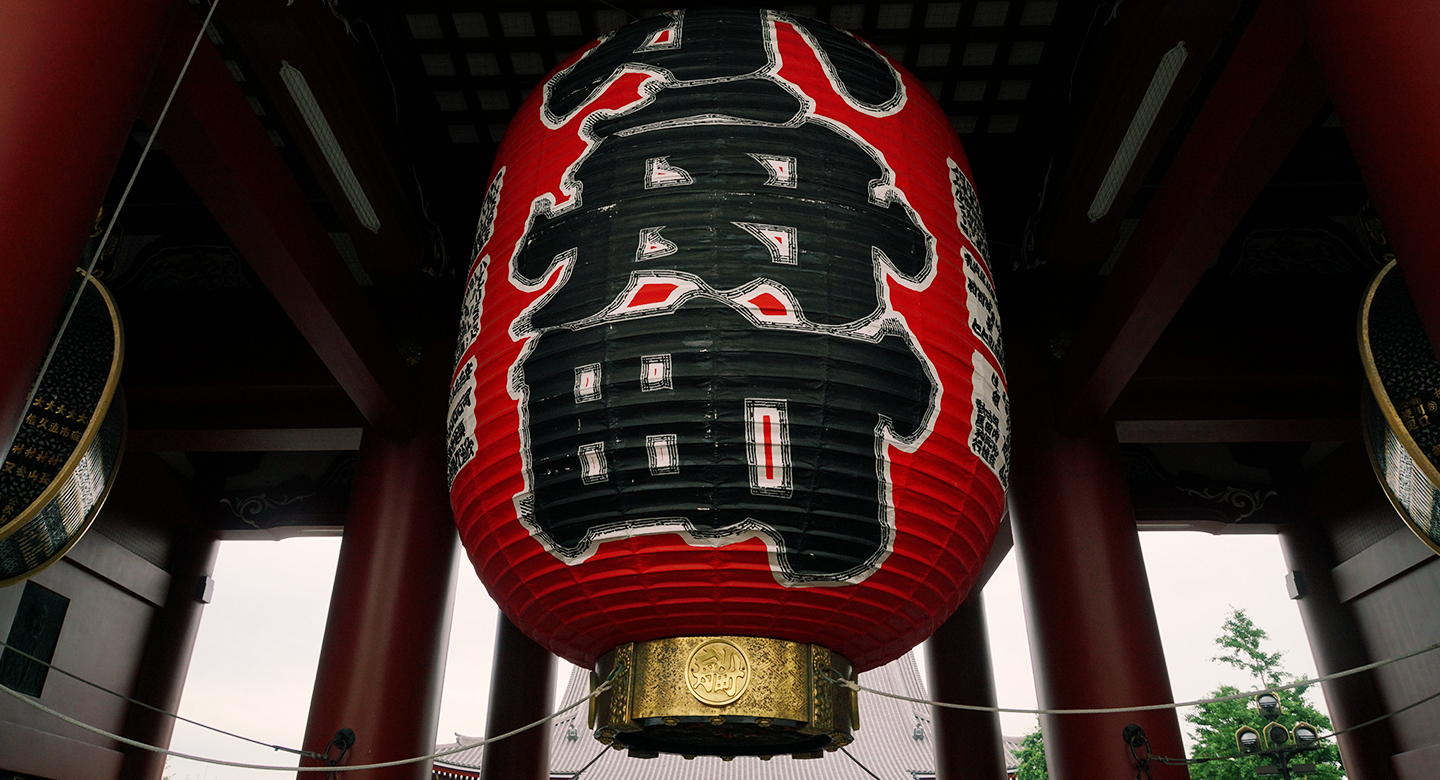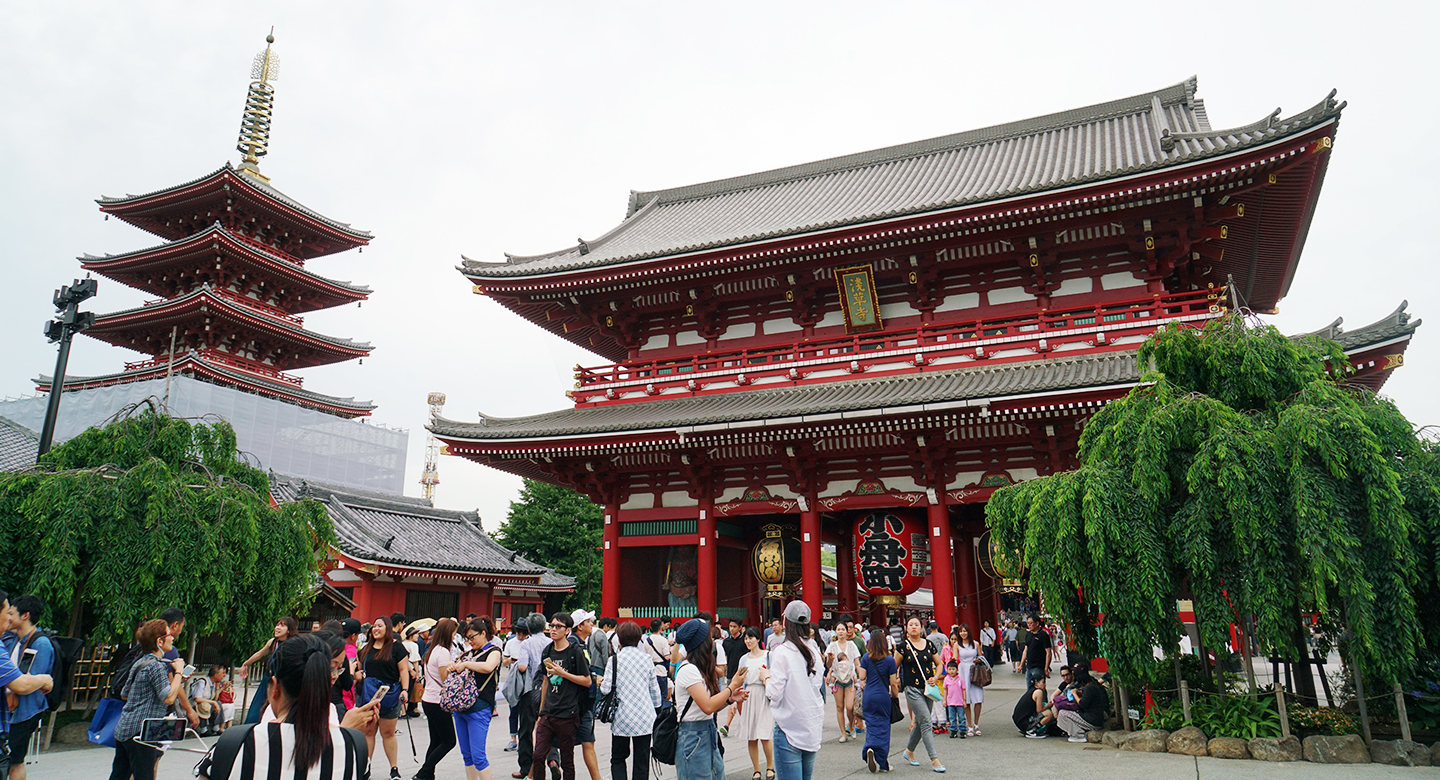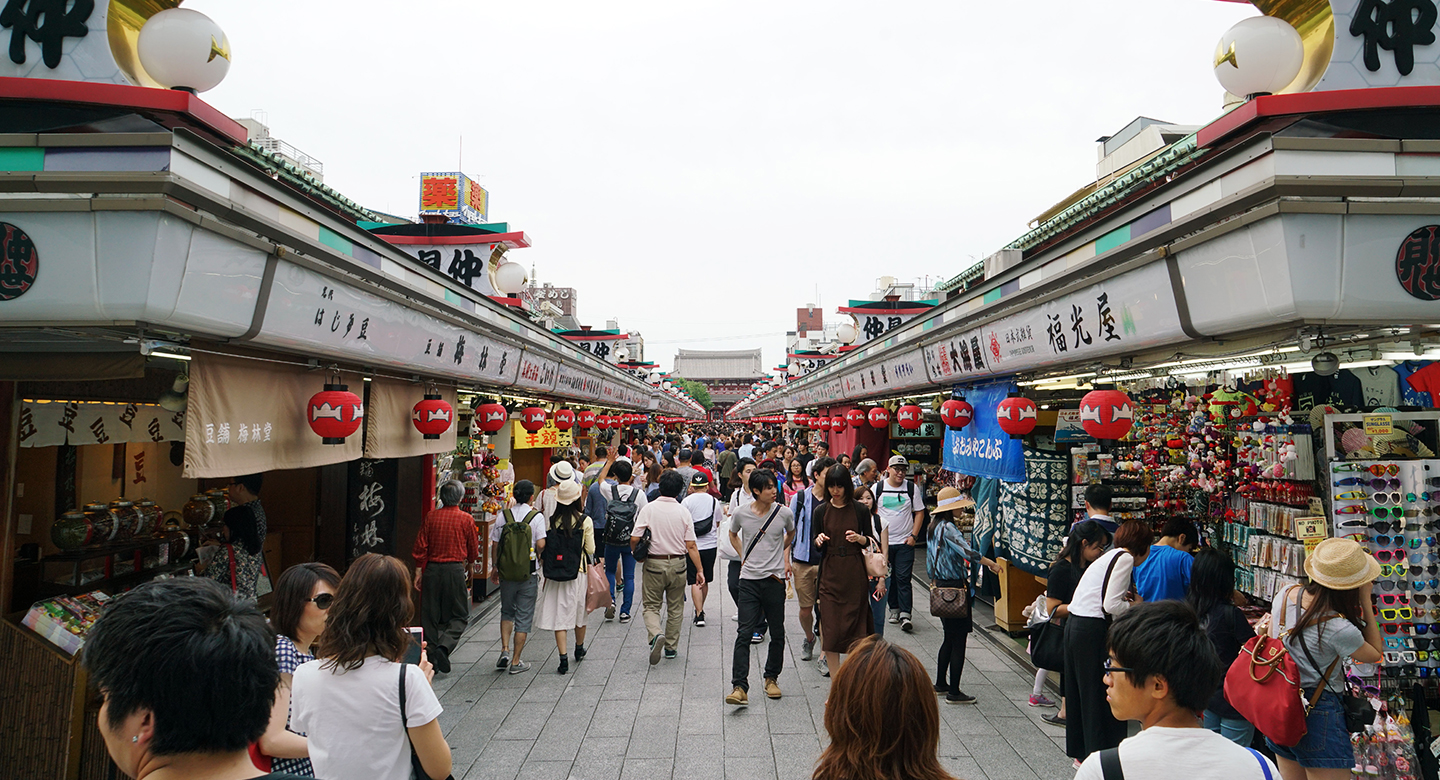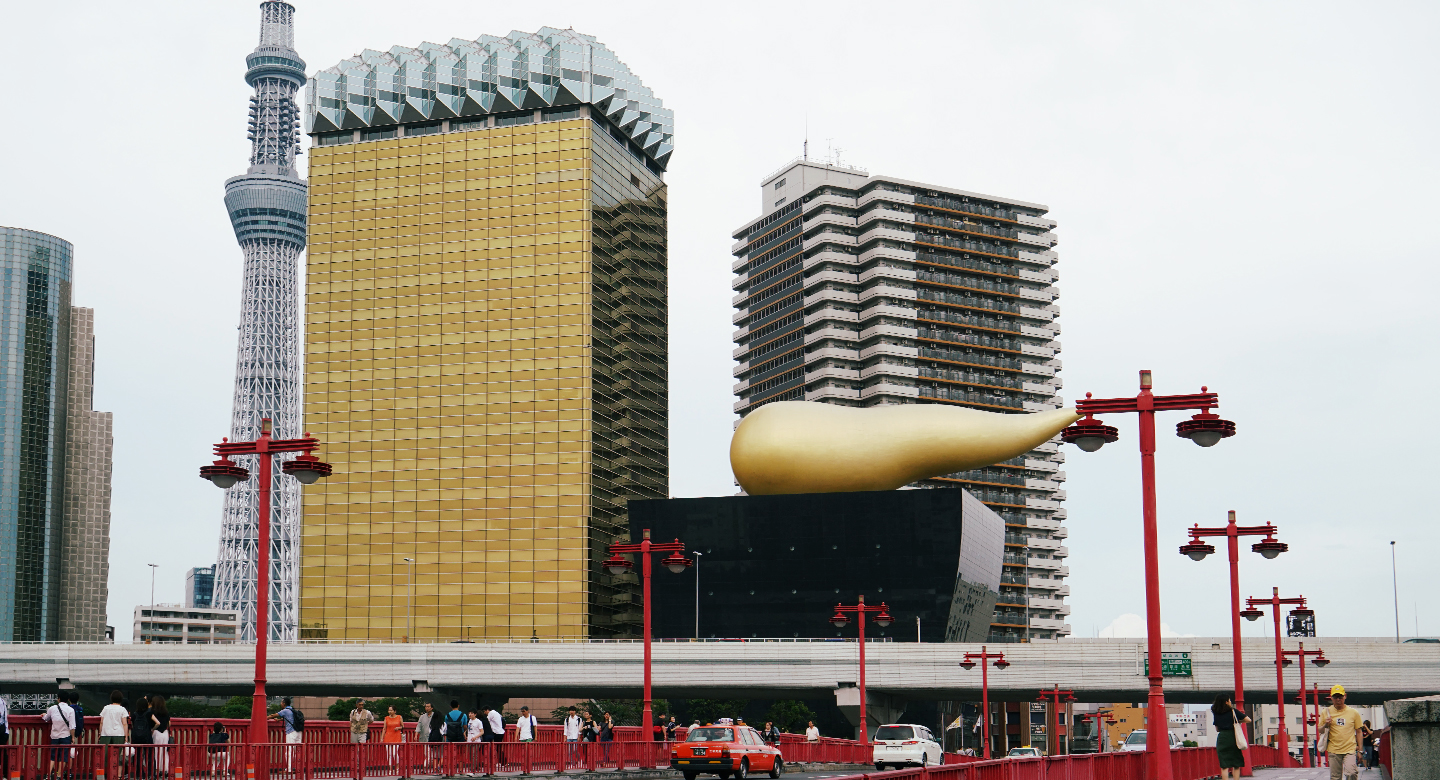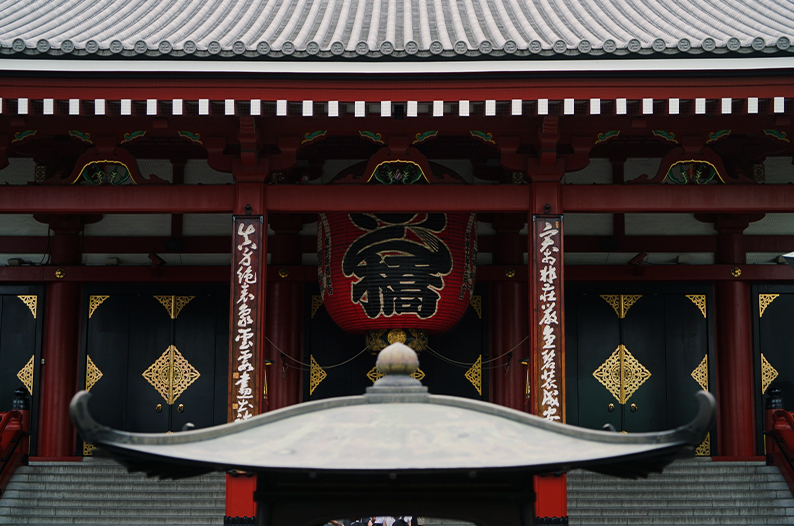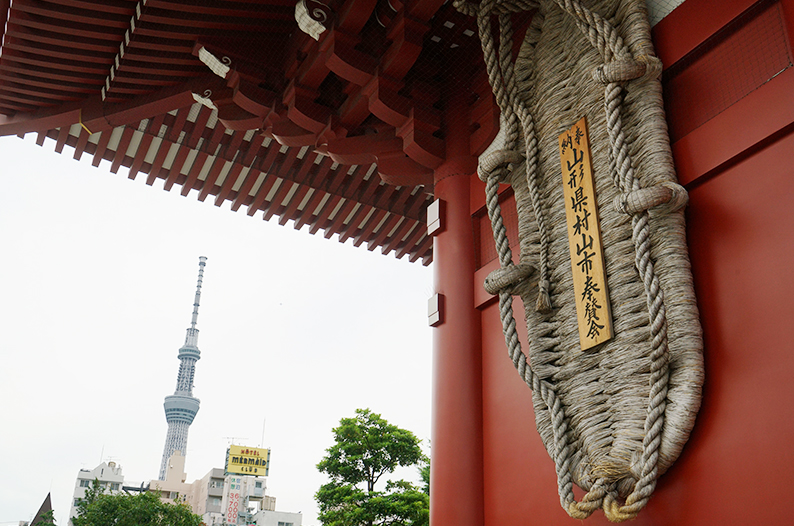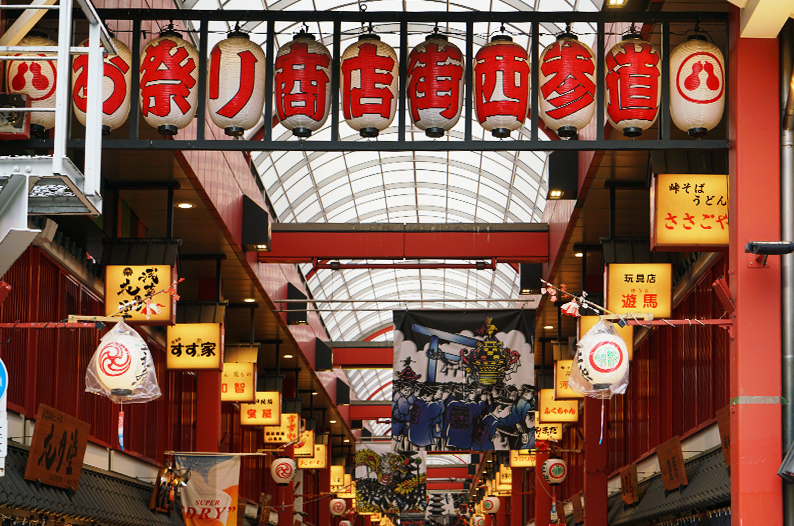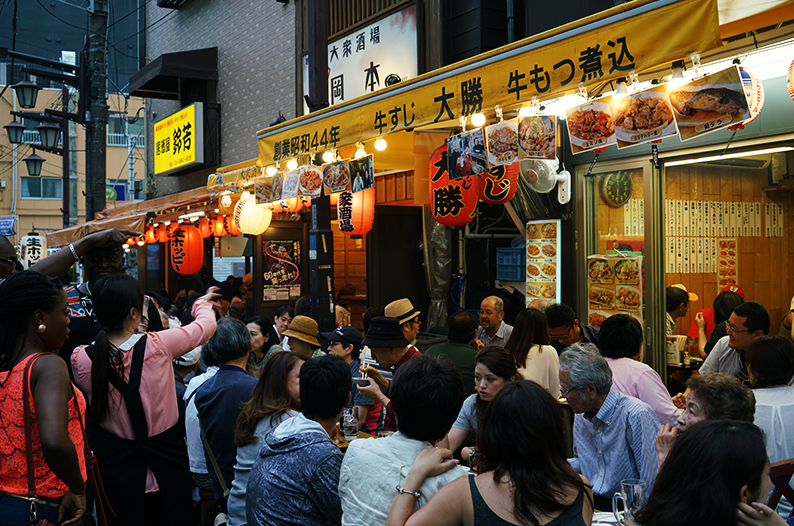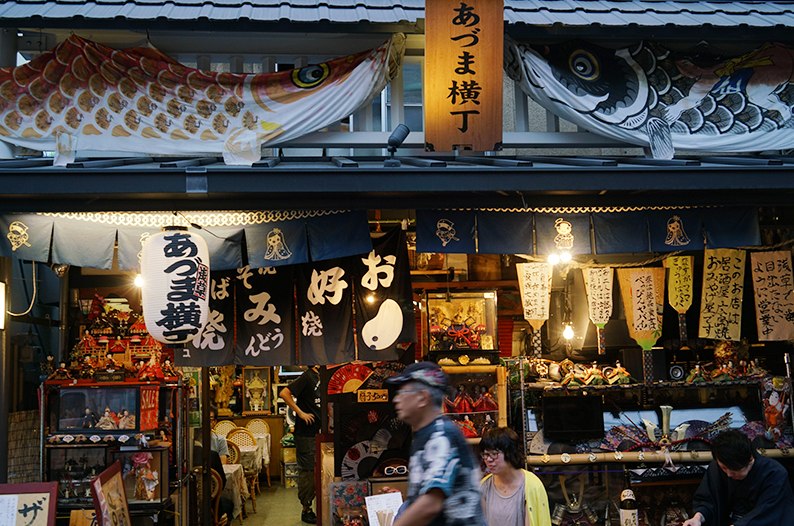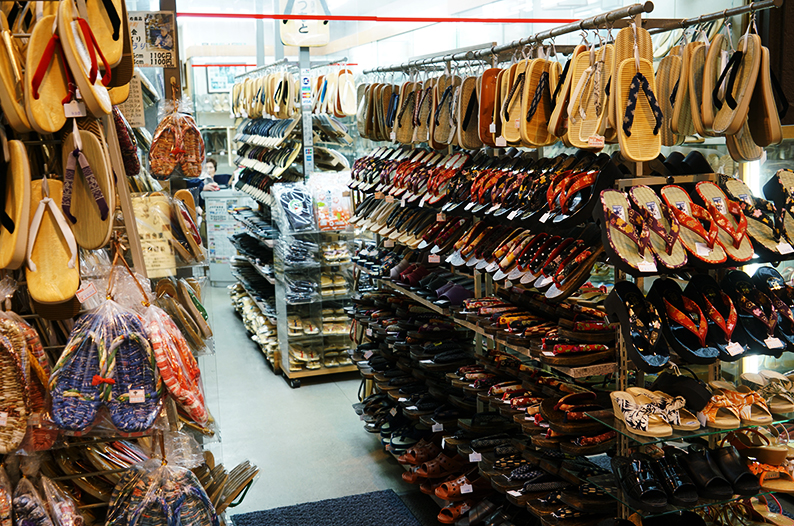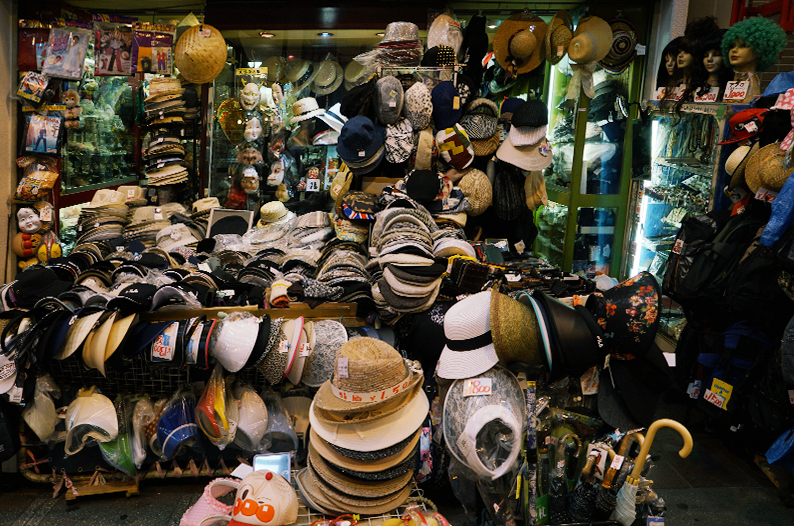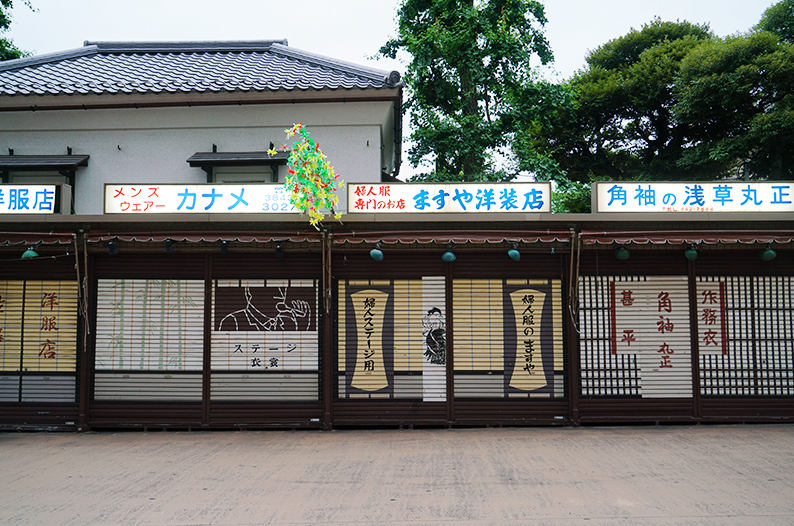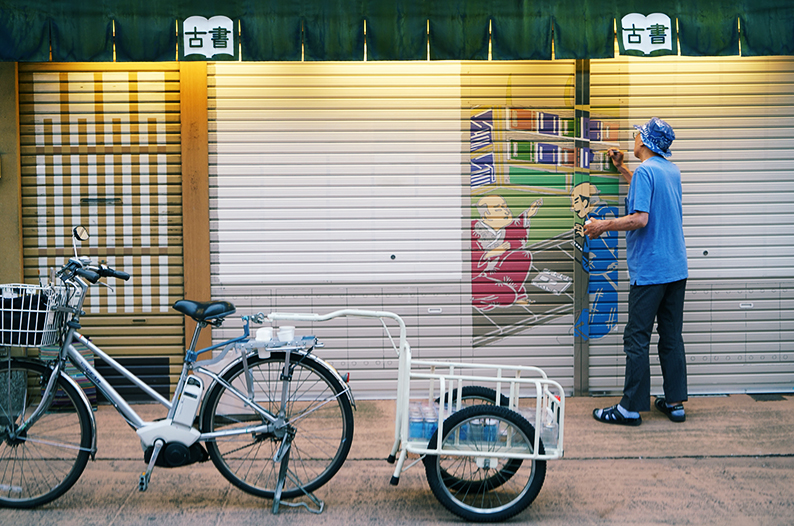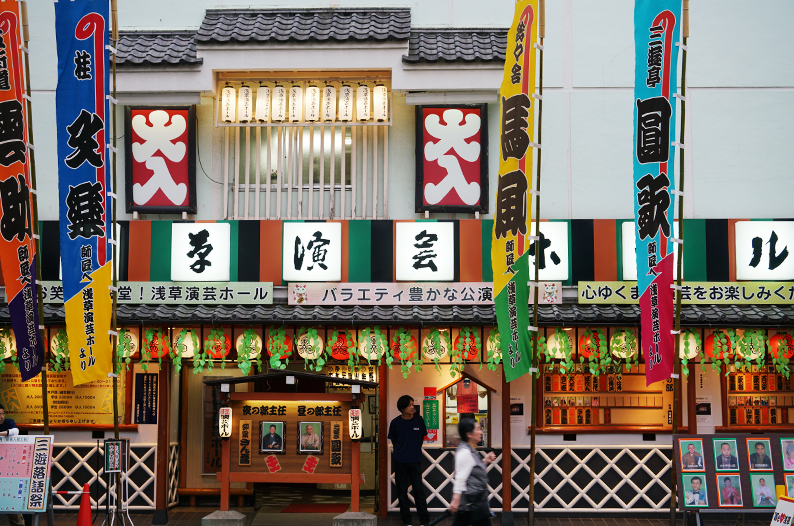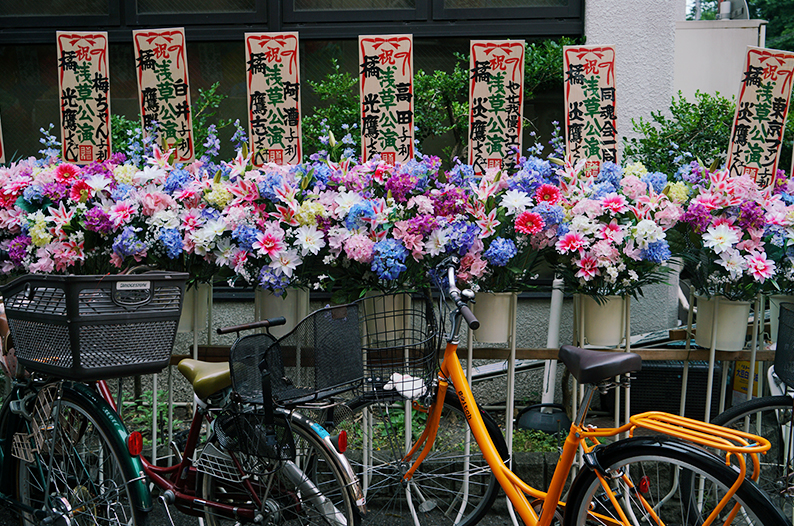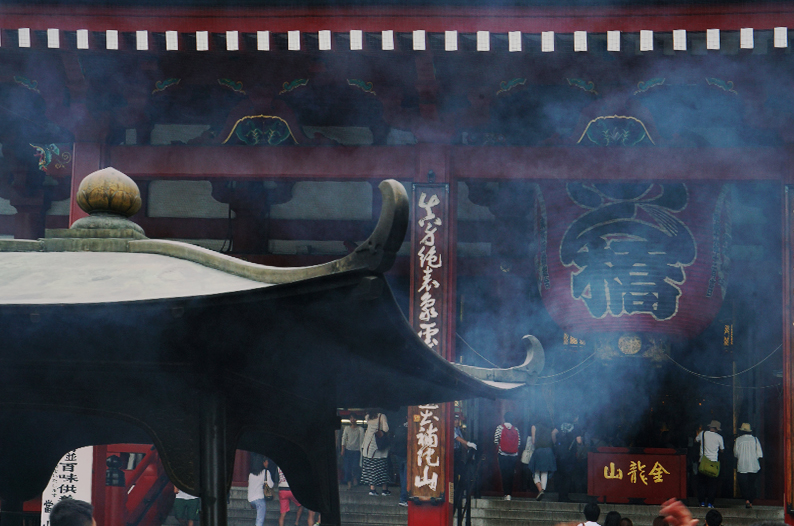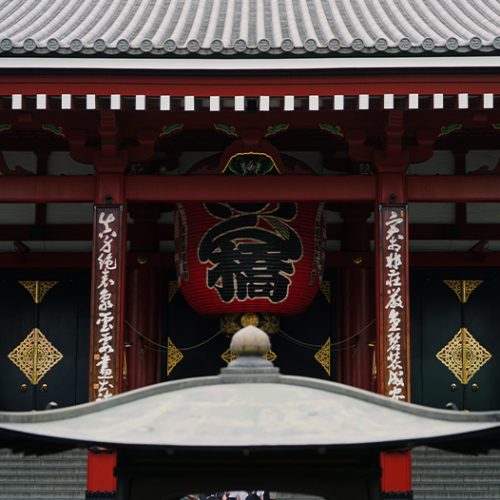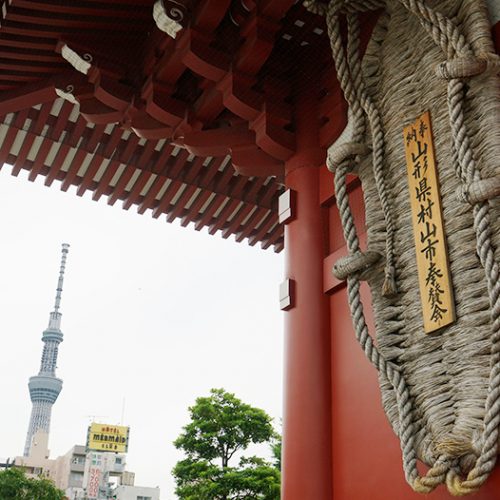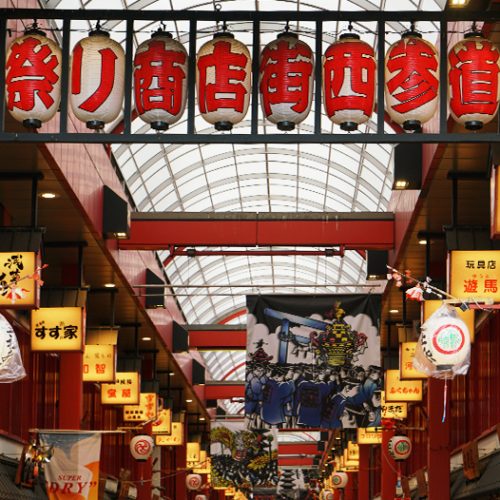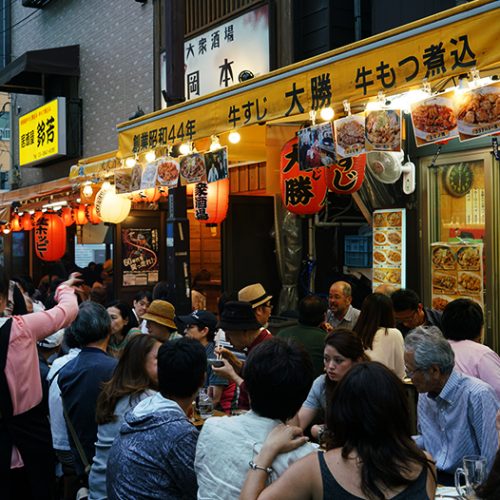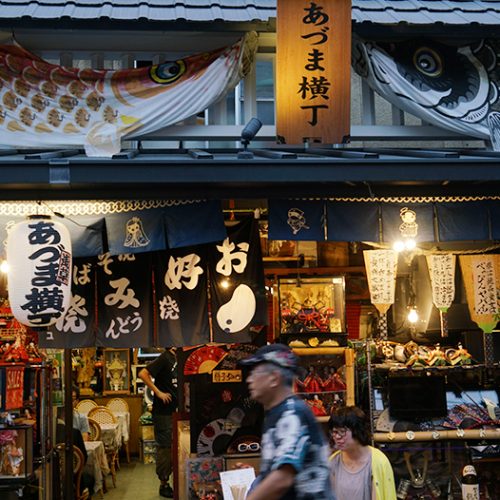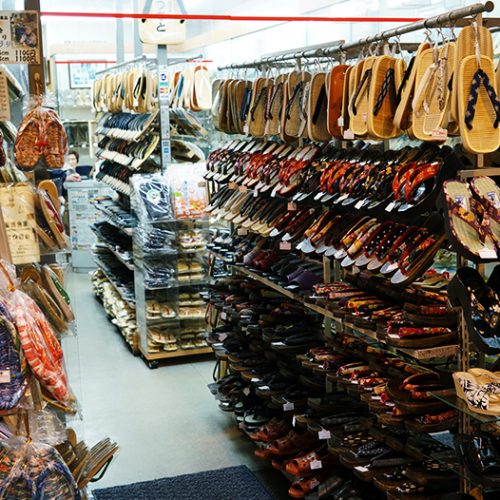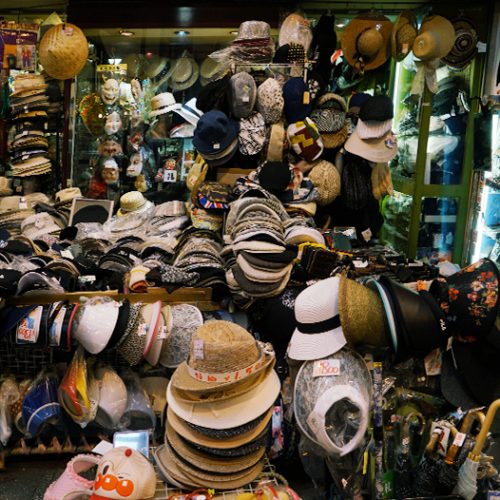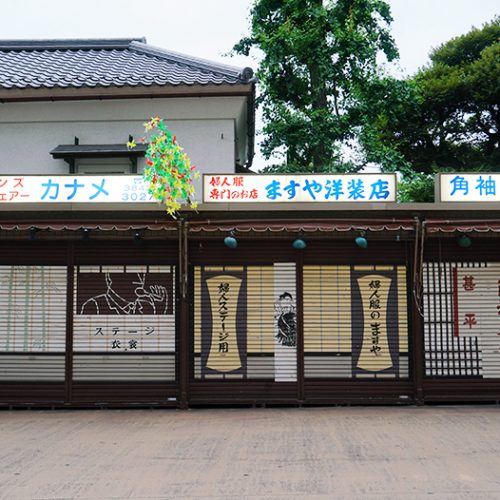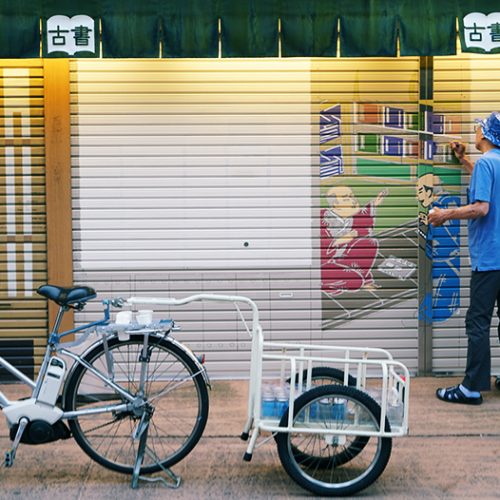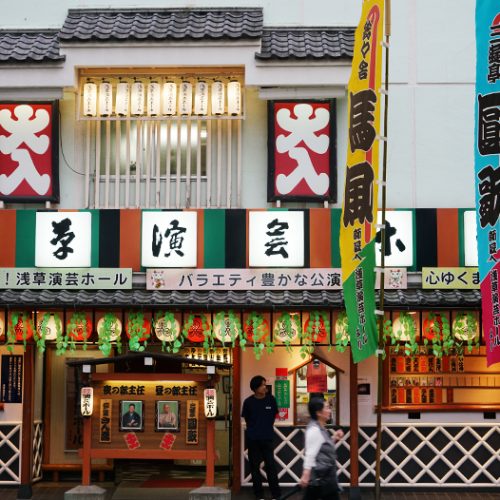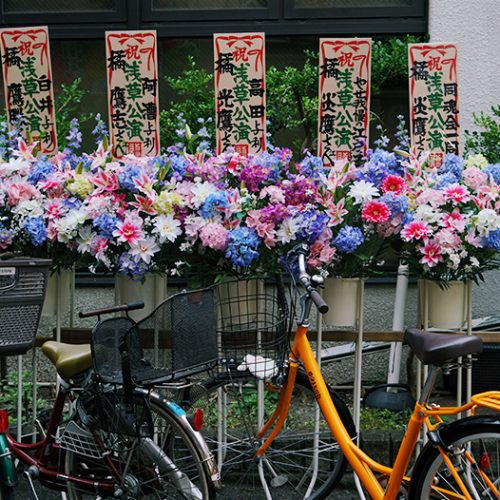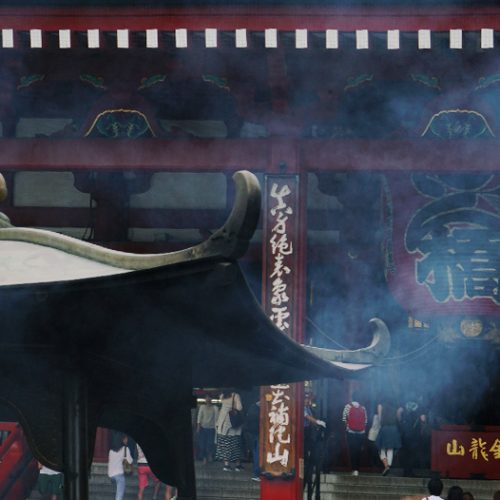Asakusa
What doesn’t kill you makes you stronger: Asakusa barely survived WW2, built itself back up piece by piece and became one of the most prominent sightseeing points in Tokyo.
A Hub of Reconstructed History
Ascending the stairway from the underground station, peering into the daylight, I could hear the crowds above us as we made our way to ground-level. We were approaching one of the top ‘must-see’ places in Tokyo, as voted by almost every publication, so I expected nothing less than the swarms of people we immediately met in the street.
It was a glorious summer day in early June. Close to lunchtime, walking through the busy streets of Asakusa brought scents and sounds unlike any I have experienced before. This was where the tourists wandered and the locals rushed. Tiny eateries, fitting only a handful of customers, lined the streets. Tea shops, leather shops and souvenir shops nestled side-by-side, their elderly staff sitting back and chatting, occasionally greeting passersby with an ‘Irasshai!’.
With our senses truly overwhelmed, we followed the crowds like fish downstream until we reached our first sightseeing point, Kaminarimon: Thunder Gate. Initially constructed around 1000 years ago and moved to this location in 1635, this massive entrance gate is seen as the symbol of Asakusa. Two Shinto Gods- Fujin the Wind God and Raijin the Thunder God stand at either side at the front. At the back of the gate there are two Buddhist deities- the God Tenryu and the Goddess Kinryu. In the centre, a giant red lantern or Chochin hangs masterfully. Weighing 670 kg and being, naturally, fragile, this centrepiece was most recently donated by the founder of Panasonic in 2003. On the base of the lantern, I admired an intricate wooden dragon carving, before being pushed along by newly arriving visitors.
Passing through the second gate, we were met with new sights and sounds as we descended on Nakamise, a shopping street a few hundred years old and spanning 200 metres. Traditional Japanese snacks, souvenirs, antiques and toys were waiting for us. At first, we stopped at a popular-looking stall to sample some sweet mochi and matcha. Standing at the eating bay, we enjoyed some much-needed shade. This street was particularly crowded, and a river of Parasols or Sun-umbrellas flowed around us. There was certainly an order to this chaos, but I savoured the break from walking.
We strolled down Nakamise, taking in the local delicacies and traditions; Yukata, folding fans, chopsticks, dried seafood. The street felt like we had stepped back in time with its traditional architecture and stock. You could easily spend 1-2 hours here simply window-shopping and trying samples.
But we ventured on, heading straight towards the Main Hall and the 5-storey Pagoda. Due to wartime destruction, these buildings are relatively new however they retain the innate quality of the era they were first constructed in. Sensou is another way to read the name Asakusa, so the Temple is the centre-point of this town, and holds importance all over Tokyo.
Before entering the main-hall, we purchased a block of incense, said a prayer and placed it in the sand bowl, alongside others. The scent of incense, combined with the scenery, stirred some spiritual feelings within me. I felt very safe here, despite the growing crowds.
The peace I had achieved lasted as we entered the main-hall. A dimly lit, intricately designed space that offers a cool resting place for the traveler. Front and centre lay a wonderful shrine-piece and to the left, fortune-papers.
Fortune papers are popular for Japanese people around the New Year. In most temples, you pay a little money, pick a drawer or a stick, and retrieve your fortune paper. These papers are defined in order of luck. You can have Good Luck, Reasonable Luck or Bad Luck. Some people believe in their fortune, and others- when presented with a Bad Luck paper- simply pay money again and retrieve a better paper. For me, no news is good news, so I walked on.
The gardens to the left of the temple are divine. Little streams filled with Koi Carp and draped in willow-trees spread out along the area and there are many places to sit and relax. We whiled away a good hour or so just wandering around this place, taking photos and admiring the smaller shrines. When it was time to eat, we headed to Shin-Nakamise, an undercover street with slightly less on offer in terms of shopping, but which had a quaint, old sandwich cafe in which we feasted on Yaki Soba and Tuna Sandwiches. The old couple who ran the place were extremely friendly and made us feel very welcome. Plus the food was absolutely delicious.
Asakusa is known as shitamachi, meaning ‘low-city’, and is called such because of the low elevation in this part of Tokyo. Known as an entertainment district during the Edo Period, the Rokku or Sixth District particularly famous for cinematics and was one of the biggest theatrical scenes in the area. As one of Tokyo’s oldest Geisha areas, I was surprised to learn that there are still 45 working Geisha in Asakusa. World War 2 must have taken its toll on this area, with the firebombing of 1945 causing a lot of damage, to the extent that not many original buildings remain. That being said, this area is definitely one of the most traditional-looking in all of Tokyo.
Well-rested and full, we headed- albeit at a slow pace- to Sumida Park. Located at the riverside and stretching for several hundred metres along each side, Sumida Park is most famous in the spring-time, as over 1000 cherry-blossom trees lie here. From here, you can take a river-cruise or admire the Asahi Beer Headquarters building. On a beautiful, hot summer’s day, the rivers are where to truly spend a pleasant afternoon in Tokyo. The sea-breeze provides relief from the growing humidity, and the clear, crisp waters lull you into relaxation.
Asakusa stands out, not only in it’s historical importance to Tokyo, but as a true taste of an era that was almost totally destroyed. To regain the ‘golden years’ from the ashes of utter destruction is a feat in itself and worthy of regard.
by Emma Price
June 15, 2016
Asakusa information
Recommended restaurants
Grill Grand (Japanese-style Western food) - 3-24-6, Asakusa, Taito-ku, Tokyo -
Mutsumi (Traditional Japanese) - 3-32-4, Asakusa, Taito-ku, Tokyo - TEL:03-3874-0600
Namiki Yabu Soba (Soba) - 2-11-9, Kaminarimon, Tito-ku, Tokyo - TEL: 03-3841-1340
Yonekyu (Sukiyaki) - 2-17-10 Asakusa, Taito-ku, Tokyo - TEL: 03-3841-6416
BentenyamaMiyakoSushi (Sushi) - 2-1-16, Asakusa, Taito-ku, Tokyo - TEL:03-3844-0034
